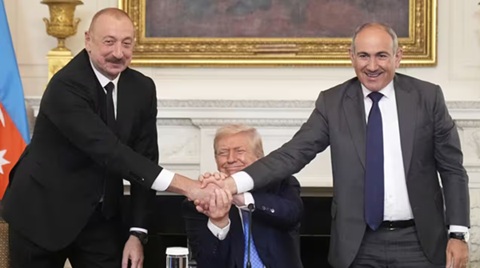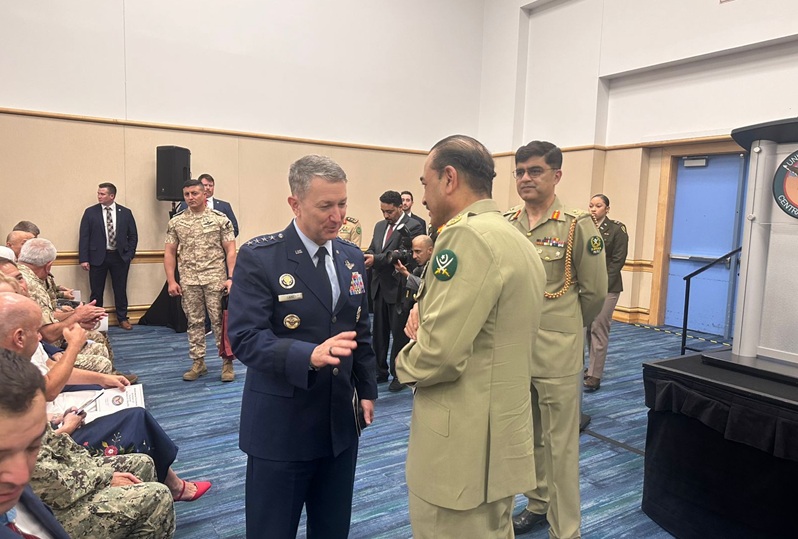The claim that the “USA has taken control of the Zangezur Corridor” and that “the Caucasus have fallen and Iran is now isolated” is partially supported but requires nuance based on the recent White House peace agreement signed on August 8, 2025, between Armenia and Azerbaijan.
White House Peace Agreement Overview
On August 8, 2025, Armenian Prime Minister Nikol Pashinyan and Azerbaijani President Ilham Aliyev signed a U.S.-brokered peace agreement at the White House, facilitated by President Donald Trump. The agreement aims to end nearly four decades of conflict over Nagorno-Karabakh and normalize relations between Armenia and Azerbaijan.
Key components include:
Establishment of the Trump Route for International Peace and Prosperity (TRIPP): This multimodal transit corridor, previously referred to as the Zangezur Corridor, connects mainland Azerbaijan to its Nakhchivan exclave through Armenia’s Syunik province. The U.S. has been granted exclusive development rights for 99 years, with plans for rail, oil, gas, and fiber optic lines.
Bilateral Agreements with the U.S.: Both nations signed separate deals with the U.S. to enhance cooperation in energy, technology, and economic sectors, strengthening U.S. influence in the South Caucasus.
Dissolution of the OSCE Minsk Group: The agreement includes a joint request to disband the Minsk Group, previously co-chaired by Russia, France, and the U.S., signaling a shift away from Russian mediation.
Geopolitical Shift: The deal capitalizes on Russia’s waning influence post-2022 Ukraine invasion, positioning the U.S. as a key player in the region while reducing Moscow’s and Tehran’s clout.
Analysis of the Claim
“USA has taken control of the Zangezur Corridor”: Verification
The U.S. has not “taken control” in a military or sovereign sense but has secured exclusive development rights for the Zangezur Corridor, now rebranded as the Trump Route, for 99 years. Armenia retains sovereignty over the territory, but the U.S. will oversee infrastructure development through a subleased consortium, with negotiations involving American firms starting soon after the signing.
Implications
This arrangement gives the U.S. significant economic and strategic leverage in the South Caucasus, a critical trade and energy hub. It allows American companies to develop infrastructure, potentially boosting U.S. commercial interests and influence in a region historically dominated by Russia and Iran. However, Armenia’s insistence on maintaining sovereignty and Azerbaijan’s preference for direct access without third-party control suggest limits to U.S. authority. The term “control” in the claim overstates the reality, as the U.S. role is primarily developmental, not administrative or military.
Critical Perspective
The rebranding as the “Trump Route” and the 99-year lease have sparked debate. Critics, particularly in Armenia, argue it compromises sovereignty, while Azerbaijan views it as a diplomatic victory. The U.S. presence could deter Russian or Iranian interference but risks escalating tensions if perceived as overreach.
“The Caucasus have fallen”
Verification: The phrase “the Caucasus have fallen” is hyperbolic and misleading. The peace agreement marks a significant step toward resolving the Armenia-Azerbaijan conflict, but it does not imply the entire Caucasus region—comprising Armenia, Azerbaijan, Georgia, and parts of Russia—has been subsumed or lost to any single power. The agreement strengthens U.S. influence but does not equate to regional domination. Georgia remains independent, and Russia retains a military presence in Armenia (e.g., the Gyumri base).
Implications: The agreement shifts the regional balance by reducing Russia’s mediation role and enhancing U.S. and Turkish influence, particularly through Azerbaijan’s alignment with Turkey. However, Russia and Iran continue to exert leverage—Russia through its military and economic ties with Armenia, and Iran through its trade and border proximity. The Caucasus remains a contested space with multiple stakeholders, not a region that has “fallen.”
Critical Perspective: The narrative of a “fallen” Caucasus may reflect sentiment on platforms like X, where dramatic claims amplify geopolitical shifts. However, it oversimplifies a complex region where local actors and external powers (Turkey, EU, China) still compete. The agreement’s success depends on implementation, which faces challenges like Armenian domestic opposition and Russian-Iranian counteractions.
“Iran is now isolated”
Verification: Iran is not fully isolated but faces increased geopolitical pressure. The peace agreement and U.S. oversight of the Trump Route threaten Iran’s regional influence by potentially bypassing its trade routes to the Caucasus and Europe. Iran has expressed strong opposition, with officials warning of a “harsh response” to changes in regional borders or external interference. Its concerns stem from the corridor’s potential to strengthen U.S. and Turkish presence near its borders, possibly encouraging separatist sentiments among Iran’s Azeri population.
Implications: Iran’s trade with Armenia and its strategic partnership with Russia provide avenues to counter U.S. gains. For example, Iran’s planned visit to Armenia in August 2025 signals efforts to bolster bilateral ties. Russia and Iran could collaborate to hinder the corridor’s progress, possibly through economic pressure or military signaling near Armenia’s borders. However, the U.S.-brokered deal positions Iran as a relative loser compared to the West, Turkey, and Azerbaijan.
Critical Perspective: Isolation is an exaggeration. Iran remains a key player in the Caucasus, with economic and diplomatic tools to maintain influence. Its opposition to the corridor reflects strategic anxiety rather than complete marginalization. The agreement’s long-term impact on Iran depends on whether the U.S. can sustain its regional presence and whether Armenia balances its Western pivot with relations with Tehran.
Broader Geopolitical Context
U.S. Strategic Gains: The agreement aligns with the U.S. goal of countering Russia and China in the South Caucasus, a critical link in the Middle Corridor trade route from China to Europe. By securing development rights, the U.S. enhances its access to energy and trade networks, supporting allies like Turkey while sidelining adversaries.
Armenian and Azerbaijani Perspectives: Armenia gains security and economic benefits but risks domestic backlash over sovereignty concerns and the lack of provisions for Nagorno-Karabakh refugees or POWs. Azerbaijan consolidates its 2023 military gains in Karabakh and strengthens ties with Turkey and the U.S., enhancing its regional clout.
Regional Reactions: Russia’s influence is diminished but not eliminated, given its military presence in Armenia. Turkey benefits from enhanced connectivity to Azerbaijan and Central Asia. The EU has welcomed the deal, citing years of prior mediation efforts.
Risks and Challenges: The agreement’s implementation faces hurdles, including Armenian opposition, potential Russian-Iranian disruptions, and unresolved issues like Nagorno-Karabakh’s displaced population. Protests in Armenia and Iran’s military posturing near the border are indicators to watch.
Conclusion
The claim is partially accurate but overstated:
- The U.S. has secured significant influence over the Zangezur Corridor through development rights, not outright control, with Armenia retaining sovereignty.
- The Caucasus have not “fallen”; the region remains a contested space with U.S. gains offset by Russian and Iranian leverage.
- Iran faces strategic setbacks but is not isolated, maintaining active diplomacy and regional ties.
The White House peace agreement marks a pivotal shift in the South Caucasus, strengthening U.S. influence and reshaping regional dynamics. However, its success hinges on implementation and managing opposition from Armenia’s domestic critics, Russia, and Iran.
Discover more from Defence Talks | Defense News Hub, Military Updates, Security Insights
Subscribe to get the latest posts sent to your email.





